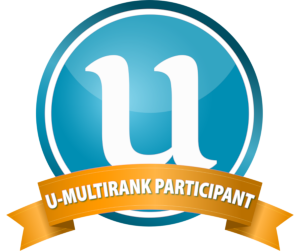Clinical Rheumatology of Children II (RBR_010)
About Study Course
Objective
1.Ensure the learning and improvement of theoretical skills in accordance with the terms of paediatric rheumatologist speciality regulations adopted in Latvia, and requirements of the European Union regarding the speciality (the program meets the requirements of European education in paediatric rheumatology, which are developed by the Paediatric Rheumatology European section (PRES) and approved by the Paediatric Section of the European Union of Medical Specialists (UEMS)), to prepare medical doctors for certification in the paediatric rheumatologist speciality in accordance to normative documentation of the Republic of Latvia.
2.Ensure the learning of basic theoretical knowledge and practical skills in paediatric rheumatology in a hospital setting.
Learning outcomes
1.1. Demonstrate deep and broad knowledge regarding children’s musculoskeletal (connective tissue) system and autoimmune connective tissue disease aetiology, pathogenesis, diagnostics, treatment and rehabilitation, which ensures the basics to creative thinking in clinical work as well as research, and the capacity to work in an interdisciplinary environment.
2. Define the specifics of diagnosis, differential diagnosis and treatment of paediatric rheumatologic diseases.
1.1. The medical doctor understands the nature of the specific problem, diagnostic algorithms and is capable to provide professional specialised emergency aid, as well as realises in practice the diagnostic, treatment and prophylaxis measures, is capable to work, study or research in complicated und unforeseeable circumstances and, if necessary, modify them by using new approaches. The doctor has the capacity for constant development, is able to communicate with different patients, their parents, and colleagues, has pedagogic and research skills, has organisational skills in the workplace.
2. Perform the rheumatologic examination of a patient, be able to communicate with colleagues, patients, persons involved in healthcare and patient relatives even in critical and psychologically traumatic situation; utilise knowledge in morphology, immunology, and radiology in the formulation of diagnosis, differential diagnosis and treatment; use contemporary medical achievements and guide personal professional growth using scientifically obtained evidence.
1.1. The doctor works according to his/her domain of authority at the highest level of knowledge, skill, and attitude acquisition and application, by performing the diagnosis, treatment, rehabilitation, and prophylaxis of children’s musculoskeletal (connective tissue) system and autoimmune connective tissue diseases, individually plans and organises personal improvement and development of professional competences as a specialist, takes responsibility for group work of the staff and is capable of innovation and entrepreneurship
2. Transfer knowledge in morphology and homeostasis in unified integrative diagnostic action with the aim to evaluate the health condition of the person, determine the diagnosis, develop and implement an individualised health care plan.



